First Conservation Servitude Wholly Initiated by the EWT Registered in the Northern Cape
By Zanne Brink, Drylands Strategic Conservation Landscape Manager
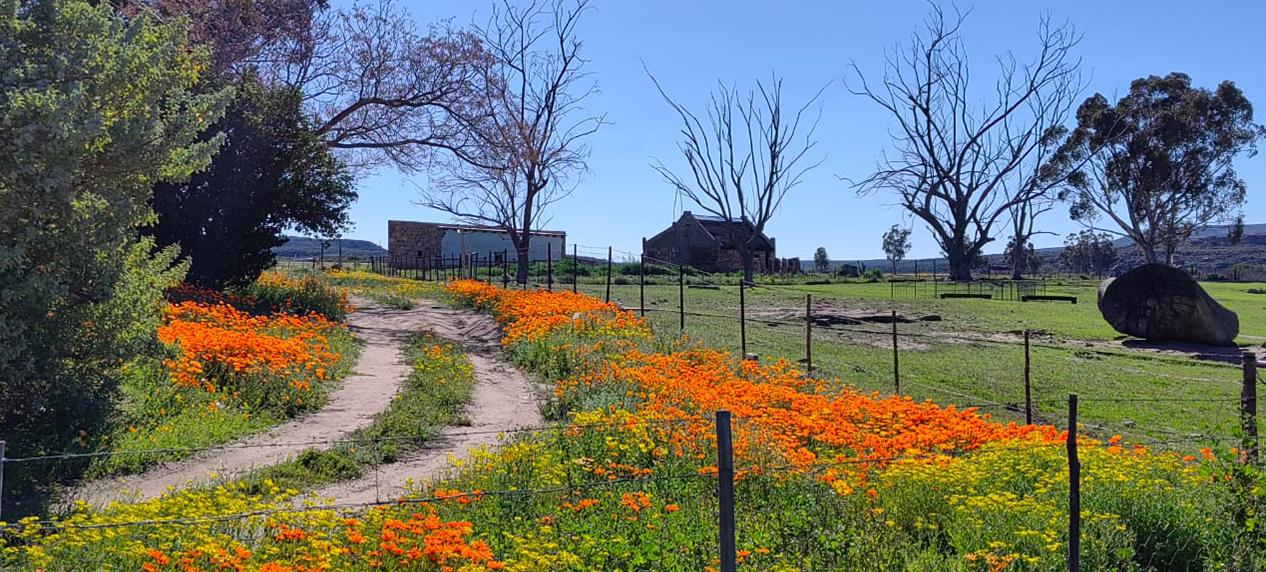
The first Conservation Servitude initiated by the Endangered Wildlife Trust has been registered in the Northern Cape.
The registration of the Lokenburg Conservation Servitude is to ensure the long-term protection of, particularly the Speckled Dwarf Tortoise, its habitat and the associated biodiversity on a farm that has been occupied by the same family for six generations.
The protection of dwarf tortoises is critical, especially because they occur in very specific habitat types along the West Coast of South Africa, inland to Namakwaland, and while this is a large area, they actually only occur in a few tiny remnant patches of critical habitat.
Lokenburg is situated in the district of Nieuwoudtville, widely known for its unique vegetation and springtime floral splendour. The farm is unique in two respects. It was the first farm in the area to receive Title Deeds in 1774, and it is the only farm to host a dwelling built by each one of the six generations that have lived on the property. Situated in the Bokkeveld, an area previously known for its large Springbok population, the working farm boasts a large variety of plant species. The owners, Nelmarie and Herman Nel, farm sheep, cattle, and rooibos tea.
It is a farm with a rich history, with numerous explorers traversing the area and documenting the rich soils and the associated fauna and flora since the mid-1700s. The late Francois Jacobus van der Merwe (the owners’ great-grandfather) was the only one of the four van der Merwe children whose land has remained intact for his descendants. This favoured the family and ensured that the land has been occupied by the same family for six generations, all of whom have always prioritised the conservation and preservation of their area because of their love of the land.
Lokenburg is situated in the winter rainfall region and lies in the transition zone between the Fynbos and Succulent Karoo Biomes. This makes the farm remarkable from a botanical point of view as it is also straddled by no less than four Bioregions: the North-West Fynbos Bioregion, the Western Fynbos-Renosterveld Bioregion, the Karoo Renosterveld Bioregion and the Trans-escarpment Succulent Bioregion.
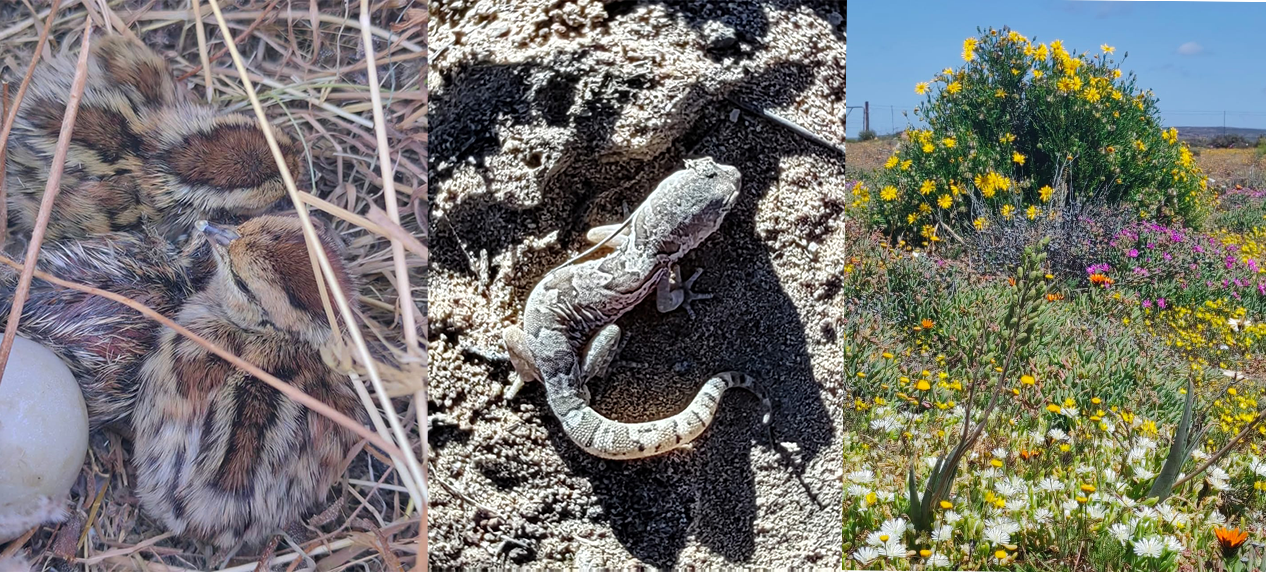
The Succulent Karoo Biome, which boasts the richest abundance of succulent flora on earth, is one of only two arid zones that have been declared Biodiversity Hotspots. The biome is home to over 6,000 plant species, 40% of which are endemic, and another 936 (17%) are listed as Threatened. This biodiversity is due to massive speciation of an arid-adapted biota in response to unique climatic conditions and high environmental heterogeneity. Lokenburg lies on the eastern edge of the Succulent Karoo Biome, within the Hantam-Tankwa-Roggeveld Subregion.
A working farm, it boasts a variety of plant species, including Iris and Ixia, as well as five springs that support the owners, Nelmarie and Herman Nel and their son, Eduard, who farm sustainably with sheep, cattle, and rooibos tea. A more recent addition to their farming practices has been an entrance to the essential oil industry as a result of their great passion for the medicinal value of our indigenous flora. In 2023, the owners became members of the South African Essential Oil Producers and offer products in support of indigenous essential oils, some of which are produced on the farm, such as Lavandin. Their vision is to further expand the essential oil enterprise to make it sustainable and economically viable for the benefit of the community and environment.
Over the years, the family has aimed to preserve their land for future generations through sustainable farming practices alongside the preservation of the rich biodiversity found on their land. This has been enabled through the implementation of a Biodiversity Servitude, which ensures that the owners are not just farmers but also stewards of conservation. Through this, they can make a positive contribution to the community, economy, and environment through this step.
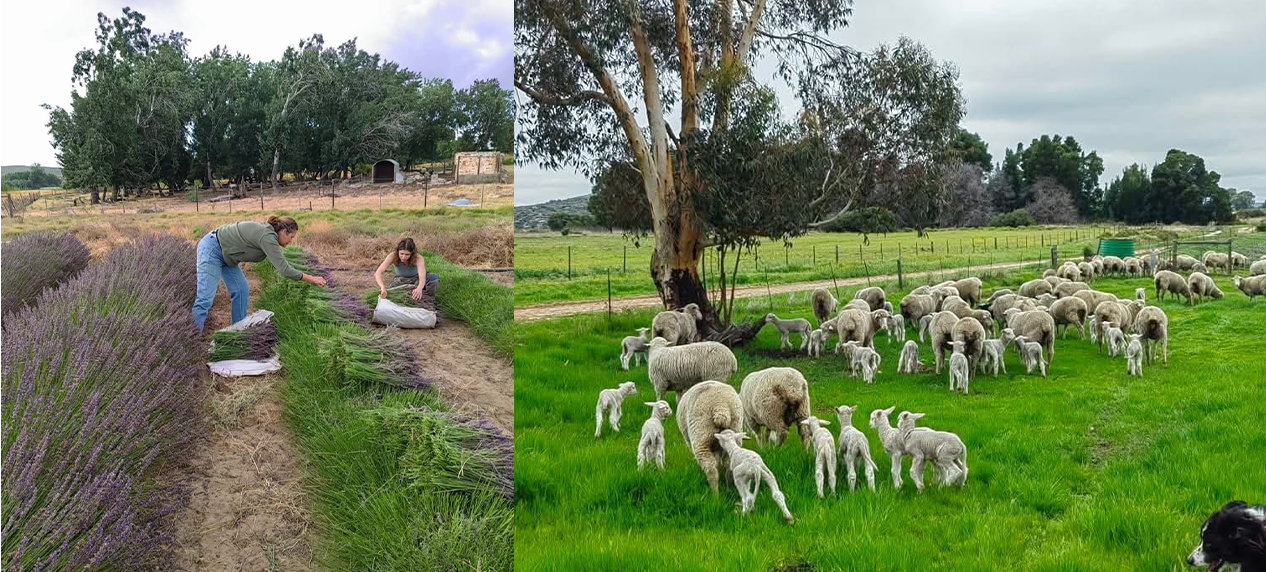
Left: Lokenburg Lavender Harvest.
This Servitude has been registered across the Lokenburg farm. Specific conservation management areas have been designated within this area—a collaboration between the landowners and the EWT—and where targeted management actions and development restrictions will be in place. Additional, species-focused, conservation actions will also take place across the broader landscape and include management of the Pied Crow (Corvus albus) populations in the area, which are unnaturally high and, through excessive predation, are driving the tortoise populations to extinction.
The primary strategic management taken for the Servitude has been encapsulated in the Lokenburg Biodiversity Management Plan (LBMP). This plan also informs the need for specific conservation actions and operational procedures, providing for capacity building, future thinking, and continuity of management, enabling the management of the Servitude in a manner that values the purpose for which it has been established. Additionally, it ensures, through collaboration, that no detrimental forms of development or agricultural activities, will take place within the designated focal areas. Key to the management plan is the conservation and protection of Chelonians (includes all tortoise and terrapin species). These are one of the most imperilled vertebrate groups, with over 60% of the world’s 357 known species threatened with extinction. Nine of the 13 southern African tortoise species are found in the arid Karoo region where they face multiple threats, including habitat loss and degradation, predation, illegal collection and in fire-prone habits, uncontrolled fires.
This farms rich biodiversity sustains numerous other Species of Conservation Concern (SoCC) including numerous classified as Threatened in the IUCN Red List of Threatened Species. Among these are a number of bird and plant species, such as the Non-Threatened Tent Tortoise (Psammobates tentorius) and Karoo Korhaan (Eupodotis vigorsii), and Vulnerable Species such as the Secretary bird (Sagittarius serpentarius), Southern Black Korhaan (Afrotis afra) and Verreaux’s Eagle (Aquila verreauxii), as well as the Endangered Ludwig’s Bustard (Neotis ludwigii) and Martial Eagle (Polemaetus bellicosus).
As stewards of our land, we work together to ensure long term sustainable agricultural conservation to the benefit of humans and species. We look forward to our path together to conserve ecosystems and landscapes.
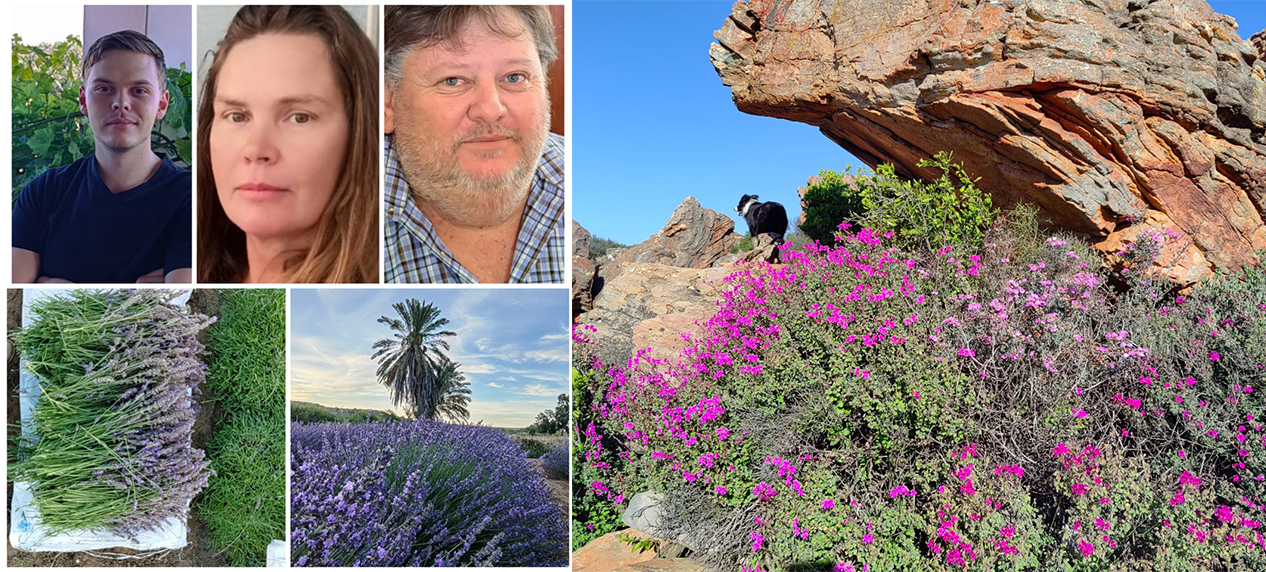
Top left: Lokenburg Family
** The EWT’s work to secure the registration of the Lokenburg Conservation Servitude was made possible by IUCN NL, the Ford Wildlife Foundation and the Nel family.
